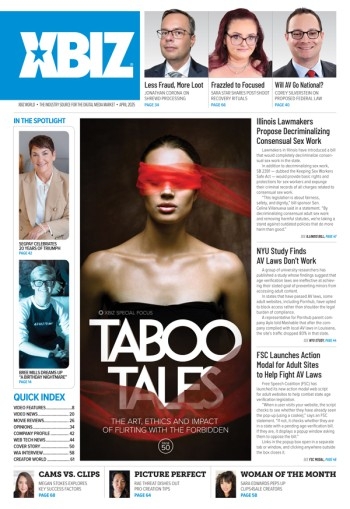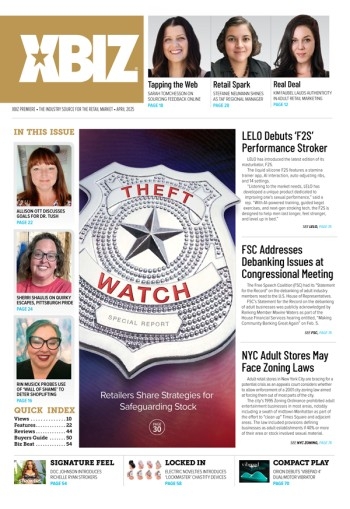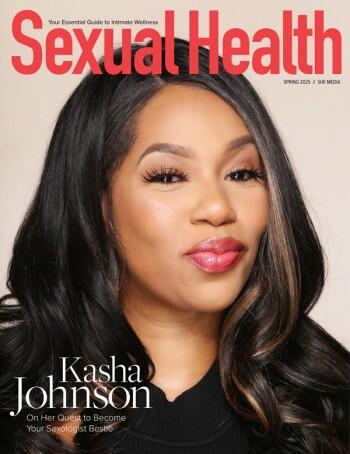In the world of social media, graphic design is more than just making things look visually appealing — it’s a vital tool in shaping and maintaining a brand’s identity. Your social media is your storefront, so aesthetics mean everything. From color schemes and typography to imagery and layout, design choices can amplify a brand’s message and create a meaningful connection with its audience.
In the sexual wellness industry, where sensitivity and creativity are key, social media graphic design plays an even greater role in breaking barriers, building trust and fostering engagement.
By balancing creativity, clarity and accessibility, brands can create a compelling visual identity that communicates their goals and builds lasting connections.
Why Graphic Design Is Essential to Brand Identity on Social Media
Social media content design helps flesh out a brand’s tone, personality and identity, visually conveying the brand’s values and messaging. Together, elements such as color scheme, typography and imagery create a recognizable and cohesive look that aligns with the brand’s voice and resonates with its target audience.
Visual consistency and bold graphic design styles play a crucial role in maintaining brand identity on social media for several reasons:
- Recognition: Repeated visual elements like logos, color palettes and typography make the brand easily identifiable. Visual design is the most effective way to establish a brand’s social media identity in a fast-paced environment where users are overwhelmed by content. Consistent graphics reinforce brand recall, carving out a distinctive space online.
- Interrupting the scroll: With users routinely scrolling their feeds at eye-watering speeds, a quickly recognizable visual concept will grab attention much quicker than text can.
- Trust: Consistent visuals convey professionalism and reliability, making the brand appear more trustworthy. We have often seen brands cause an uproar by overhauling their design, because users find comfort in reliability and the familiar.
- Emotional connection: Thoughtful design choices evoke emotions aligned with the brand’s values, creating a deeper connection with the audience. Social media is fertile ground for nurturing connection through storytelling, so content that manipulates emotion through visual design is ideal for social media.
For sexual wellness brands, thoughtful and consistent design can turn sensitive topics into more approachable and digestible points, which in turn builds further trust and connection with the audience.
Important Considerations When Designing Social Media Graphics
One of the most important things to consider is compliance with platform guidelines — particularly on Instagram. Avoid explicit imagery or text to prevent being flagged. A creative way to avoid being picked up by the algorithm is to replace explicit words with emojis or substitute letters for numbers.
Think about fun and creative ways to showcase sexual wellness products without blatantly depicting their intended use. Show how lubricants can multitask as other beauty products, or make sex toys into playful pop culture characters. A major part of social media graphic design is thinking outside the box!
Tone of voice is also important, as sexual wellness topics can be difficult for some people to talk about. A thoughtful balance between informative and approachable is perfect for educating the audience without pushing people too far out of their comfort zone.
Communicating a Brand’s Goals Through Graphic Design
When planning ways to get your message across, consider the target audience, visual style and messaging. Design elements such as color schemes, typography and imagery should reflect the brand’s core values and resonate with the audience’s preferences. This is particularly true for social media, where a profile acts as a shop window, giving users insight into the brand, its products and its expertise.
Creating an aesthetic for a social media profile could include pop culture styles for younger audiences or informative content for older demographics. Every graphic should align with the overall brand narrative, ensuring consistency across all materials and effectively conveying the brand’s objectives. Curating this visual design “feel” for a brand is also an effective way of aligning with a narrower target demographic.
Graphic Design Mistakes to Avoid on Social Media
One of the most common issues that pops up when designing for social media is accessibility. The main culprits are usually either a poor use of color contrast or overly small fonts, both of which hugely affect readability. It’s important to ensure that your content is readable for all users, including those with visual impairments.
Cluttered design is also a huge no-no. Overloading images with too much text can dilute messaging, while using too many different visual elements can distract from the main content. Large blocks of text are also anathema to scroll-happy users with short attention spans. Keep it to key elements, and save lengthier text for the captions.
Another common mistake is using too many different design styles. This confuses the brand identity and can risk losing the audience’s attention. A snapshot of a brand account should appear cohesive and show a clear vision. Inconsistent styles project a chaotic and unprofessional aesthetic that doesn’t reflect well on a brand.
Mobile optimization and testing designs on different screen sizes are other important factors to consider. Most users will view content on mobile devices, so designs should be clear on smaller screens.
Finally, don’t overrely on stock images! Doing so has an impersonal effect that takes away from a brand’s authenticity — especially with a topic as intimate as sexual wellness, where you want to relate to your audience and remain as genuine as possible.
Graphic Design Trends to Explore in 2025
Recent developments in graphic design include the increasing use of AI tools for automating design processes, allowing for faster creation of drafts and layout suggestions. However, human creativity ensures originality and adherence to brand styles and tone of voice.
We have also recently been seeing more integration of motion graphics and interactive elements to enhance user engagement. Motion graphics, such as animated logos or interactive buttons, keep users engaged longer by adding movement and depth to static designs. Interactive elements like quizzes, polls or clickable infographics invite users to participate actively, improving their user experience.
Graphic design works behind the scenes to communicate values, build recognition, and connect with audiences on a deeper level. From maintaining consistency to avoiding common pitfalls, a thoughtful design approach ensures that every visual element speaks to the brand’s goals. By balancing creativity, clarity and accessibility, brands can create a compelling visual identity that communicates their goals and builds lasting connections.
Hannah McManus is Little Leaf Agency's one-stop shop for social media content and graphic design. With six years of experience in social and digital marketing, McManus has worked with an array of intimate care brands, ranging from sex toys to women’s shaving. Little Leaf specializes in sexual wellness PR and communications, and manages social channels brands, including Babeland, Good Vibes and Sextoys.co.uk.








